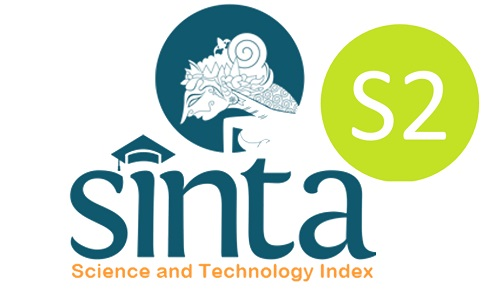COHESION AND COHERENCE IN ENGLISH EDUCATION STUDENTS’ THESIS
DOI:
https://doi.org/10.22373/ej.v1i2.189Keywords:
Discourse Analysis, Cohesion, Coherence, ThesisAbstract
This study is entitled Cohesion and Coherence in English Education Students’ Thesis. The aim of this study is to describe the cohesion and coherence as wholeness aspect of discourse in English Education students’ thesis. This study is a qualitative research. The data sources in this study are the thesis of three students that were obtained by purposive sampling. Furthermore, analysis of the data was done by identifying and classifying the data that related to cohesion, based on the theory of Halliday and Hasan (1976), and related to coherence, based on the theory of Oshima and Hogue (1991). From analysis, it was found four things related to cohesion and coherence. First, the use of grammatical cohesion devices in thesis, which consists of reference, substitution, ellipsis, and conjunction; and the use of lexical cohesion devices, which consists of reiteration and collocation, was used in thesis. Second, the violence of cohesion device was found in grammatical devices, such as reference and conjunctions. Third, the use of coherence devices, which consists of key nouns repetition, use of pronouns, transition signal, and logical order of chronology was found in students’ thesis. Fourth, the cause of the error coherence of thesis consists of keyword repetition errors, inconsistent pronouns, inappropriate transition signal, grammatical errors, and inappropriate punctuation.Downloads
References
Ahmed, Abdel Hamid. (2010). “Students’ Problems with Cohesion and Coherence in EFL Essay Writing in Egypt: Different Perspectives.†Literacy Information and Computer Education Journal (LICEJ), 1(4), 211-221.
Beaugrande, Robert, de. & Wolfgang, D. (1981). Introduction to Text Linguistics. New York: Longman.
Brown, G. & Yule G.. (1996). Analisis Wacana (Transl. Soetikno, I.). Jakarta: Gramedia Pustaka Utama.
Crystal, D. (2008). A Dictionary of Linguistics and Phonetics. Oxford: Blackwell Publishing.
Cutting, Joan. (2008). Pragmatics and Discourse. New York: Routledge.
Halliday, M.A.K, & Hasan, R. (1976). Cohesion in English. London: Longman.
Halliday, M.A.K. (1994). Bahasa, Konteks, dan Teks: Aspek-Aspek Bahasa dalam Pandangan Semiotik Sosial (Transl. Asruddin Barori Tou). Yogyakarta: Gadjah Mada University Press.
Kridalaksana, Harimurti. (2008). Kamus Linguistik (4th Edition). Jakarta. Gramedia Pustaka Utama.
Oshima, A., & Ann H. (1991). Writing Academic English (3rd Edition). New York: Longman.
Poedjosoedarmo, Soepomo. (1989). Cara Menyusun Karya Ilmiah. Brunei Darussalam: Universiti Brunei Darussalam.
Downloads
Published
Issue
Section
License
Proposed Policy for Journals That Offer Open Access
Authors who publish with Englisia journal agree to the following terms:
- Authors retain copyright and grant the journal right of first publication with the work simultaneously licensed under a Creative Commons Attribution License that allows others to share the work with an acknowledgement of the work's authorship and initial publication in this journal.
- Authors are able to enter into separate, additional contractual arrangements for the non-exclusive distribution of the journal's published version of the work (e.g., post it to an institutional repository or publish it in a book), with an acknowledgement of its initial publication in this journal.
- Authors are permitted and encouraged to post their work online (e.g., in institutional repositories or on their website) prior to and during the submission process, as it can lead to productive exchanges, as well as earlier and greater citation of published work (See The Effect of Open Access).









